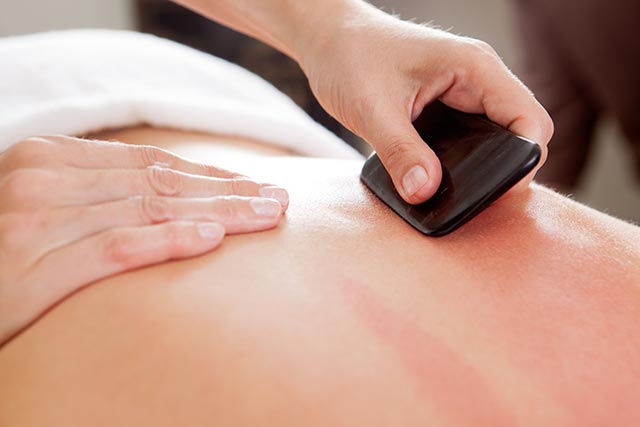
In a recent study, Chinese researchers looked at the effects of gua sha therapy – an ancient healing technique that involves scraping the skin with a massage tool – and its potential as a treatment for DPN. They reported that this alternative therapy can significantly improve the symptoms of DPN and help control blood sugar levels. The researchers discussed their findings in an article published in the journal Complementary Therapies in Clinical Practice.
Gua sha therapy is a non-invasive natural treatment for diabetes-induced nerve damage
For their open-label, randomized controlled study, the researchers recruited a total of 119 participants with DPN. They randomly assigned these participants to either one of two groups: 60 ended up in the gua sha group, while 59 were assigned to the control group and received usual care. Treatment for the gua sha group involved 12 consecutive sessions that occurred once a week.
The researchers considered scores for Toronto Clinical Scoring System (TCSS), Vibration Perception Threshold (VPT) and Ankle Brachial Index (ABI), as well as fasting plasma glucose (FPG) as outcome measures.
The researchers reported that after the first cycle of gua sha treatment, they found statistically significant differences between the two groups in terms of sensory function (measured with VPT) and improvements in symptoms of peripheral artery disease (measured using ABI). Peripheral artery disease is caused by atherosclerosis and is characterized by a narrowing of the arteries that serve the legs, stomach, arms and head.
On the other hand, the researchers noted that total TCSS scores and FPG levels for both groups were not significantly different. At the eighth and 12th week of their post-intervention assessment, the researchers observed that gua sha therapy significantly reduced the severity of DPN symptoms, improved sensory function, reduced peripheral artery disease and regulated the plasma glucose levels of the participants.
In addition, the researchers noticed significant changes in the mean scores for TCSS, VPT and ABI, as well as the plasma glucose levels, of the gua sha group when they compared baseline measurements with post-intervention measurements. These changes suggest that gua sha therapy caused progressive improvements in DPN symptoms, sensory function, peripheral artery disease and blood glucose levels without causing serious adverse events.
Based on these findings, the researchers concluded that gua sha therapy is a safe, effective and well-tolerated treatment that reduces DPN symptoms.
Other health benefits of gua sha therapy
Gua sha is a technique developed by the Ancient Chinese to increase blood flow. It relies on either short or long scraping strokes made on the surface of the skin using a smooth-edged instrument or massage tool. This tool is used repeatedly to massage the skin with downward strokes. Ancient Chinese healers believed that doing so would help release stagnant energy, which is considered the root cause of inflammation, pain and other health problems. Besides dispersing this energy, the Ancient Chinese also believed that gua sha promotes natural healing.
Gua sha is effective at reducing inflammation; hence it is often used to relieve the symptoms of inflammatory conditions, such as:
- Hepatitis B
- Migraine headaches
- Breast engorgement
- Neck pain
- Tourette syndrome
- Perimenopausal syndrome
- Chronic back pain
Gua sha is a good alternative or complementary therapy for ailments that cause pain and inflammation. However, due to the repeated scraping involved, gua sha can cause skin bruising or minor bleeding. If you want to try gua sha therapy, make sure it is performed by a licensed or trained therapist. People who are taking certain medications, such as blood thinners, are discouraged from trying gua sha.
Sources include:
Please contact us for more information.























